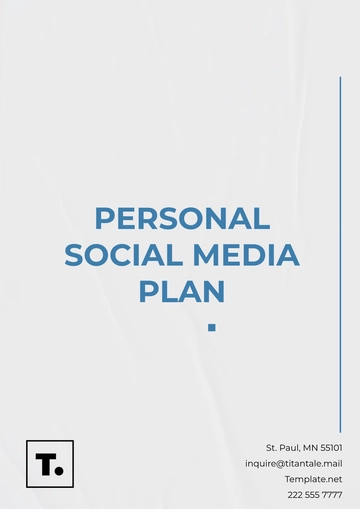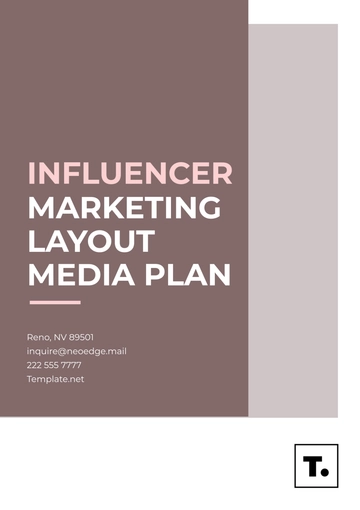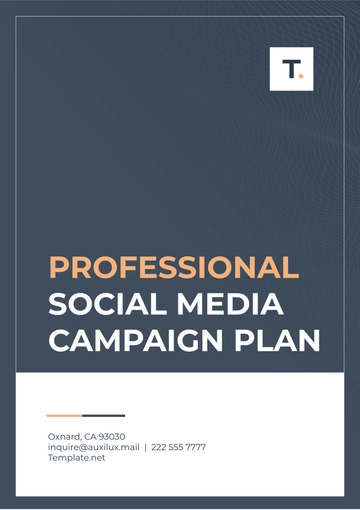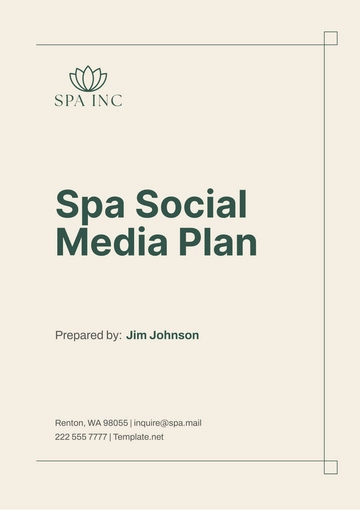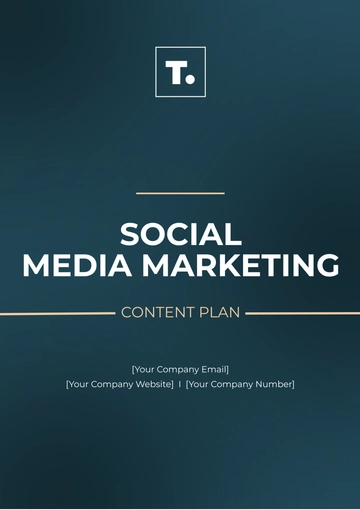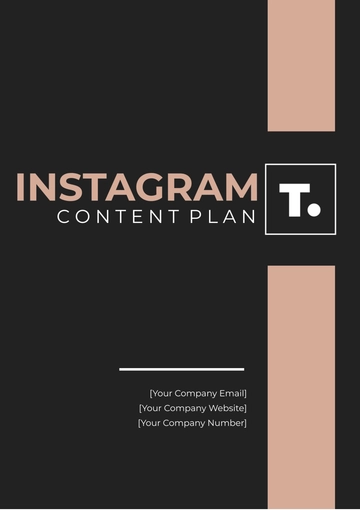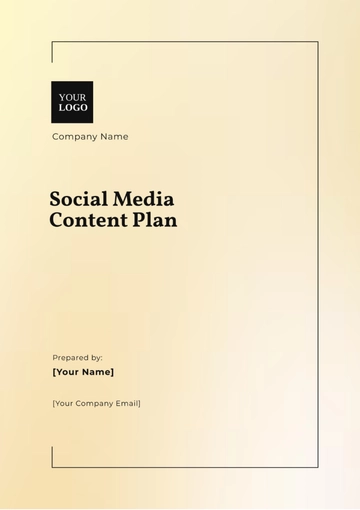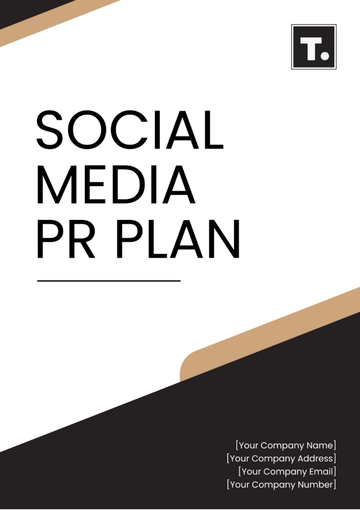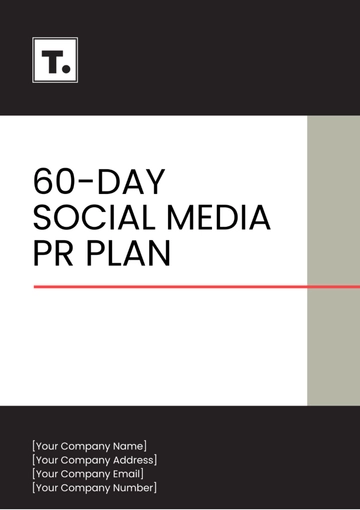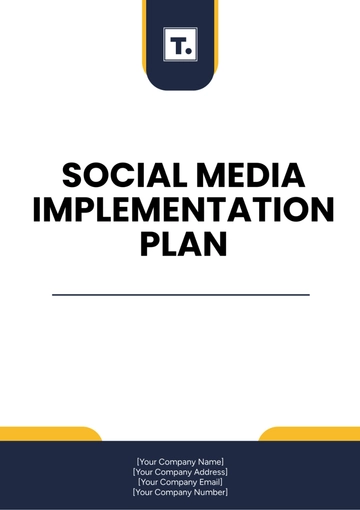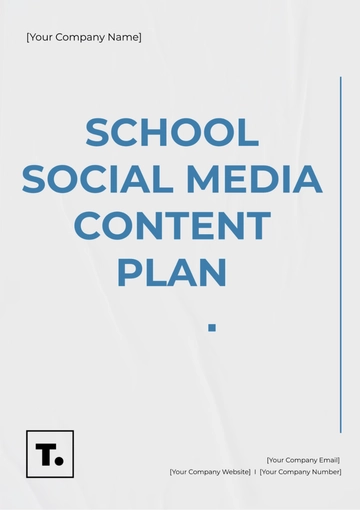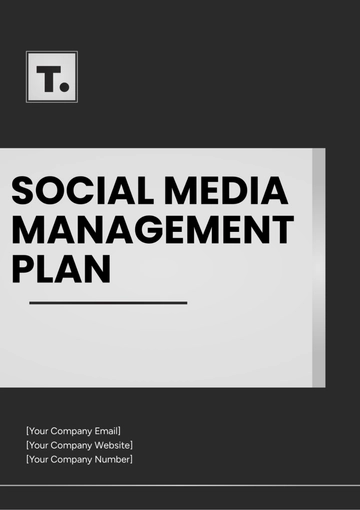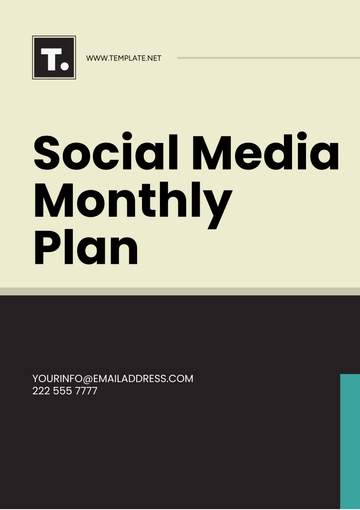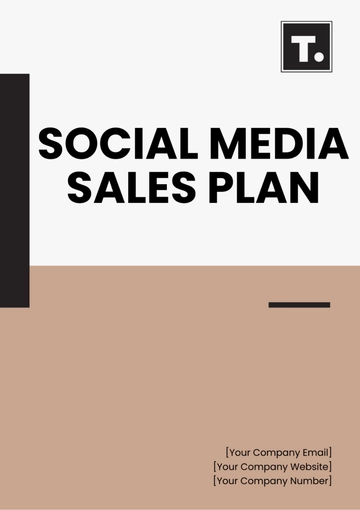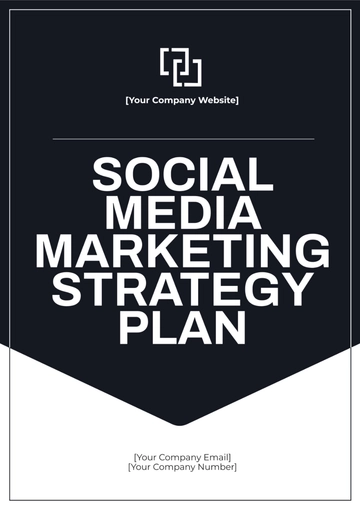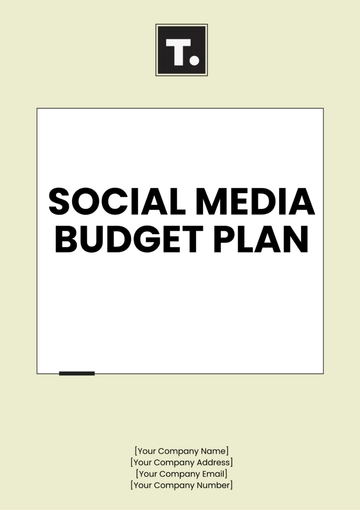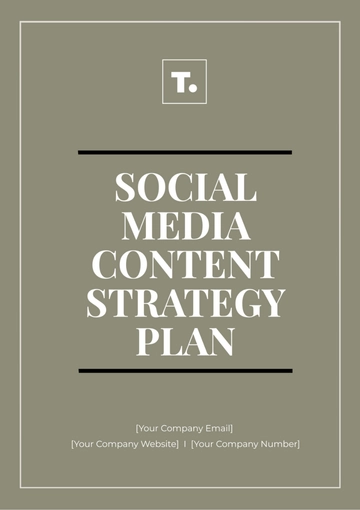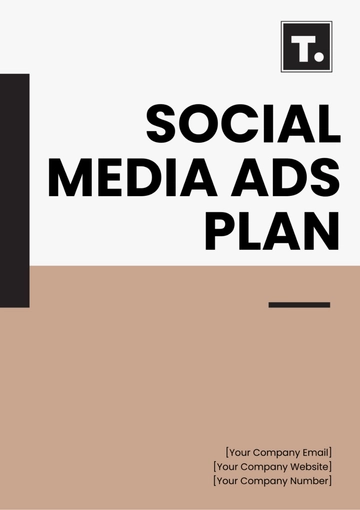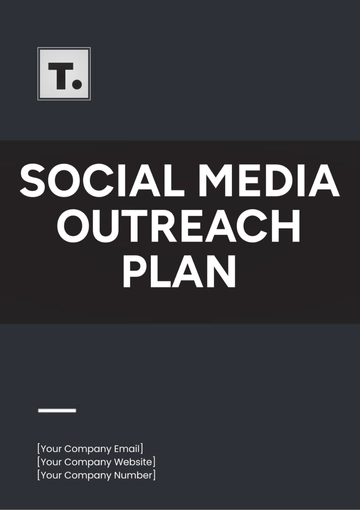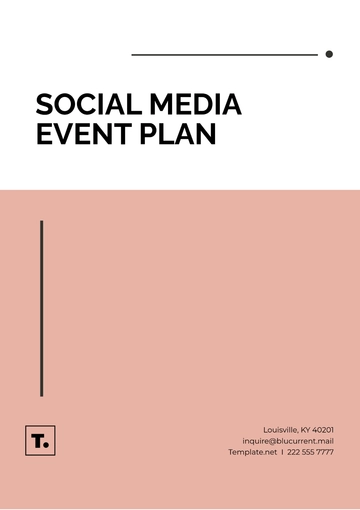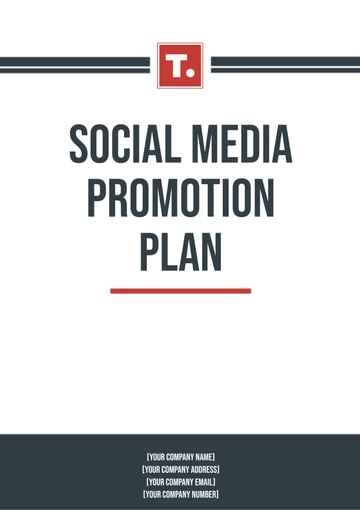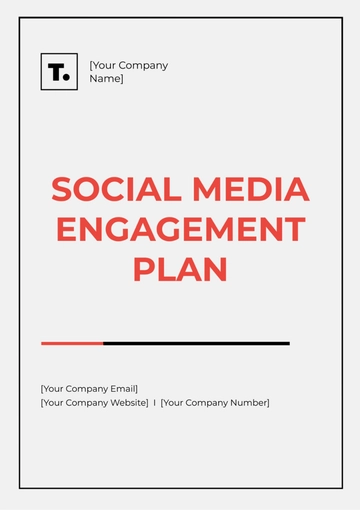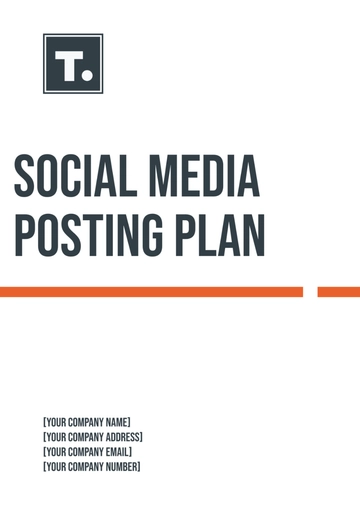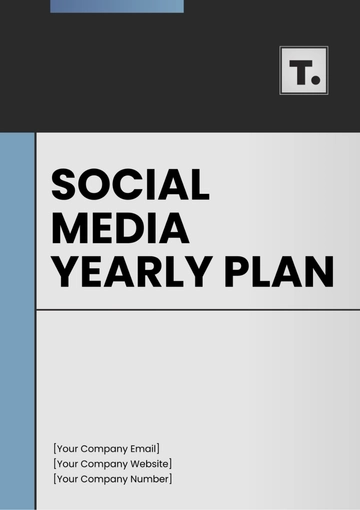Free Comprehensive Social Media Advertising Campaign Plan
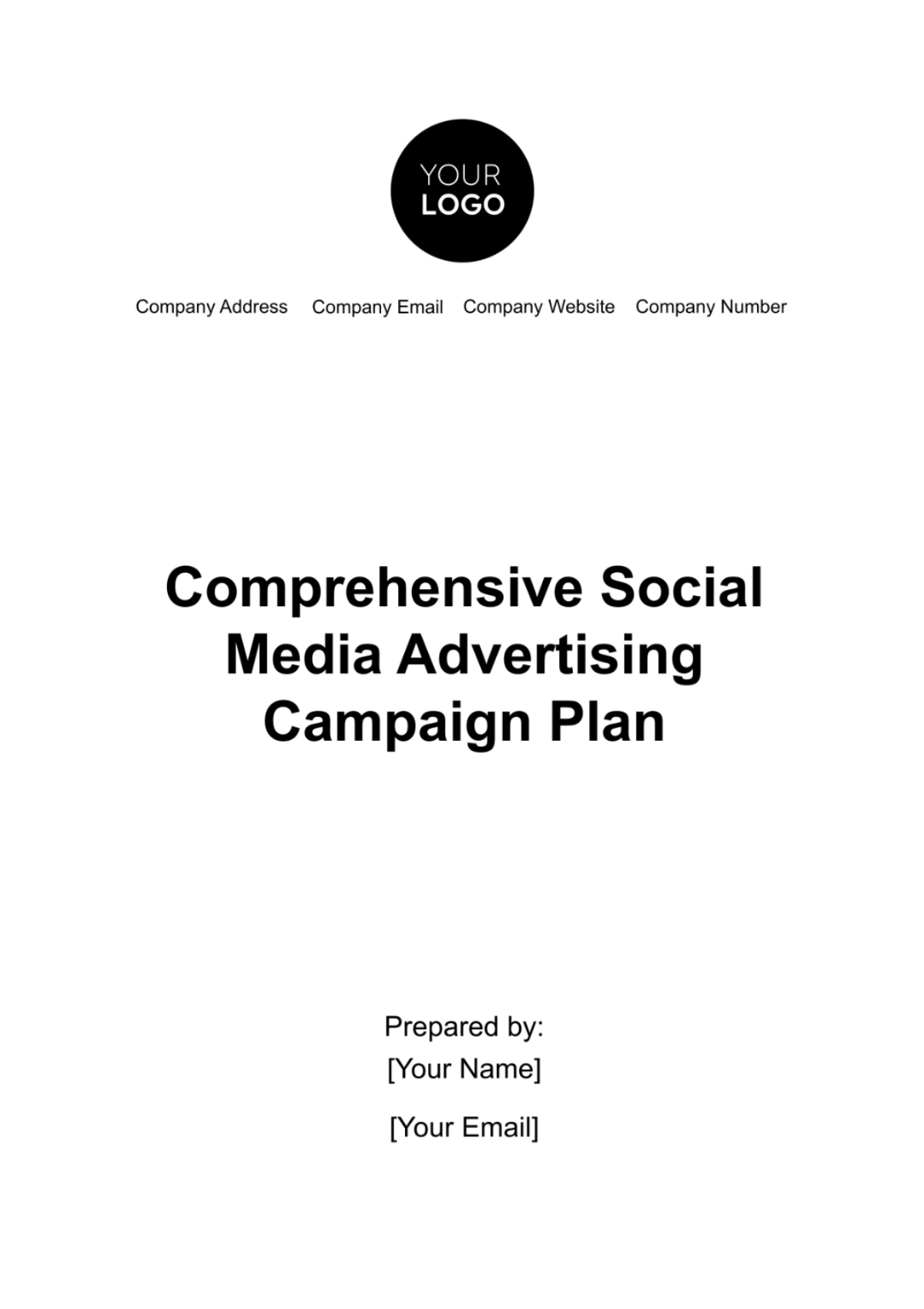
Introduction
The Social Media Advertising Campaign by [Your Company Name] is designed to create a significant impact in the digital space. This campaign aims to harness the power of various social media platforms to amplify brand visibility, engage with diverse audiences, and drive meaningful interactions that translate into tangible business outcomes. By integrating a blend of innovative content strategies, targeted advertising, and interactive elements, the campaign is tailored to resonate with the identified audience segments.
Key aspects of the campaign include:
Multi-Platform Approach: Leveraging the unique strengths and user demographics of platforms like Instagram, TikTok, LinkedIn, Facebook, and Pinterest to maximize reach and engagement.
Content Diversity: Crafting a variety of content types such as visually appealing posts, immersive stories, insightful articles, and engaging videos to cater to the diverse preferences of our target audience.
Strategic Timing: Aligning the content and ad postings with peak user activity times across different time zones to ensure maximum visibility and engagement.
Data-Driven Customization: Utilizing advanced analytics and consumer insights to continuously refine our content and targeting strategies, ensuring they remain relevant and effective throughout the campaign duration.
The overarching goal of this campaign is not just to elevate the brand's presence on social media but also to foster a lasting connection with the audience, thereby contributing to sustained business growth and brand loyalty.
Campaign Objectives
The objectives of this campaign are carefully crafted to align with both the immediate and long-term goals of our client. These objectives are not only measurable but also strategically designed to drive significant impact across various facets of the brand's online presence.
Increase Brand Awareness: Aim to boost brand visibility by 30% across all targeted social media platforms. This will be measured through metrics such as reach, impressions, and the number of mentions. The goal is to expand the brand's digital footprint, making it a recognizable name among the targeted demographics.
Boost Engagement Rates: Enhance audience interaction with the brand's social media content by 25%. Key indicators for this objective include likes, comments, shares, and overall engagement rates. Engaging content strategies and interactive campaigns will be employed to foster a two-way communication flow with the audience, enhancing brand affinity.
Drive Website Traffic: Channel 20% more traffic to the client’s website from social media platforms. This will be tracked through referral traffic analytics. By integrating compelling call-to-actions (CTAs) and creating seamless linkages between social media content and the website, the campaign aims to encourage users to explore the brand's online offerings more deeply.
Improve Conversion Rates: While not explicitly stated initially, an underlying objective is to improve the conversion rate from social media engagements. By tracking the number of leads or sales generated from social media channels, [Your Company Name] aims to not only attract but also convert the audience into loyal customers.
Strengthen Customer Relationships: Cultivate stronger relationships with the existing customer base. Measuring customer satisfaction and retention rates post-engagement will provide insight into the success of this objective. Personalized content and responsive communication strategies will play a key role in achieving this goal.
By setting these comprehensive and dynamic objectives, [Your Company Name] ensures that the campaign delivers substantial value to the client, not just in terms of immediate metrics, but also in building a robust and engaging brand presence on social media.
Target Audience
The success of a social media campaign hinges on a deep understanding of the target audience. [Your Company Name] employs a data-driven approach to precisely define and understand the key demographic segments, tailoring the campaign to resonate with their specific interests and preferences.
Demographic Segment | Age Group | Interests | Platform Preference |
Young Adults | 18-24 | Technology, Fashion, Music, Gaming | Instagram, TikTok |
Professionals | 25-40 | Business, Health, Personal Development, Travel | LinkedIn, Facebook |
Parents | 30-45 | Family Activities, Lifestyle, Health, Home Improvement | Facebook, Pinterest |
Psychographic Profiling:
Beyond demographic data, we can also delve into psychographic profiling to understand the motivations, attitudes, and values of these segments. This includes:
Lifestyle Preferences: Analyzing the daily habits, hobbies, and social activities that influence their media consumption.
Purchasing Behavior: Understanding their buying patterns, brand preferences, and factors that drive their purchasing decisions.
Content Engagement: Studying how each segment interacts with different types of content, identifying what captures their attention, prompts engagement, and spurs action.
Customized Content Strategy:
Leveraging these insights, we can design a customized content strategy for each segment, ensuring that the messaging aligns with their unique preferences and behaviors. This strategy involves:
Content Personalization: Crafting content that speaks directly to the interests and needs of each demographic segment.
Platform Optimization: Tailoring the content format and style to suit the specific norms and trends of each preferred social media platform.
Engagement Tactics: Implementing specific tactics to increase engagement, such as interactive polls for young adults, webinars for professionals, and how-to guides for parents.
This nuanced understanding of the target audience allows our company to create a campaign that is not only aligned with the client's objectives but also deeply resonates with the intended audience, driving meaningful engagement and results.
Platform Strategy
[Your Company Name]'s platform strategy is meticulously designed to leverage the unique features and user demographics of each social media platform, ensuring optimized engagement and impact.
Detailed Platform Approaches:
Instagram: Utilizing visually stunning imagery and captivating stories to capture the audience's attention. The content will be a mix of high-resolution product images, behind-the-scenes glimpses, and lifestyle shots that align with the brand's aesthetic. Partnering with influencers whose followers align with the target audience, leveraging their reach and credibility to enhance brand visibility.
TikTok: Producing dynamic and engaging short-form videos that highlight the brand's personality. This includes how-to videos, behind-the-scenes clips, and fun brand challenges. Creating branded hashtag challenges to encourage user participation and virality, increasing brand engagement and reach.
LinkedIn: Sharing well-researched articles, industry news, and thought leadership pieces that provide value to professionals. This content positions the brand as a knowledgeable and authoritative voice in its industry. Regularly posting about company achievements, milestones, and events to keep the professional network informed and engaged.
Facebook: Creating and nurturing brand-centric Facebook groups to foster a sense of community. Engaging with the audience through interactive posts, live Q&A sessions, and community events. Utilizing a mix of content types, including short videos, image posts, and informative articles, to engage a broad audience base.
Pinterest: Designing eye-catching infographics and step-by-step guides that provide value to users interested in DIY, lifestyle, and home decor. Optimizing pins with relevant keywords and descriptions to increase visibility in Pinterest search results.
Platform | Posting Frequency | Engagement Tactics | Expected Reach |
1-2 posts/day, 3-5 stories/week | Instagram Live sessions, interactive story polls, hashtag campaigns | 100K users | |
TikTok | 3-4 videos/week | User challenges, duets with influencers | 150K users |
2-3 posts/week | LinkedIn groups participation, sharing industry insights | 50K users | |
1 post/day, 1-2 live videos/week | Polls, Q&A sessions, user-generated content features | 200K users | |
4-5 pins/week | Collaborative boards, pin optimization for search | 30K users |
By employing this detailed and platform-specific strategy, the company can guarantee that the social media advertising campaign effectively engages with the target audience across all relevant social media channels.
Budget Allocation
The budget allocation for the company’s social media campaign is strategically designed to optimize return on investment across various platforms, considering their unique audience reach and engagement potential.
Platform | Monthly Budget | Expected ROI | Allocation Rationale |
$5,000 | 15% | High visual engagement and influencer marketing potential. | |
TikTok | $4,000 | 20% | Rapid user growth and high engagement rates. |
$3,000 | 10% | Targeted towards professional audience engagement. | |
$6,000 | 12% | Broad audience reach and diverse content formats. | |
$2,000 | 8% | Niche market with high conversion potential. |
Strategic Considerations:
Cost-Per-Click (CPC) and Cost-Per-Impression (CPI) Analysis: Regular analysis of CPC and CPI across platforms to ensure efficient use of budget and adjust strategies as needed.
Performance-Based Reallocation: Monitoring campaign performance metrics closely to reallocate funds dynamically, prioritizing platforms with higher ROI.
Content Creation and Curation Costs: Allocating a portion of the budget for high-quality content creation, which is critical for engagement and brand perception.
By employing this detailed and adaptable budget allocation strategy, the company will make sure that the social media advertising campaign not only reaches its target audience effectively but also provides the best possible return on investment.
Content Creation and Curation
The content creation and curation strategy at [Your Company Name] is a cornerstone of the social media campaign, focusing on crafting engaging, relevant, and high-quality content that resonates with the target audience across different platforms.
1. Content Development Strategy:
a. Brand Storytelling: Developing a cohesive narrative that reflects the brand's values, mission, and unique selling propositions. This involves creating story arcs that unfold across multiple posts and campaigns, engaging the audience with a consistent and compelling brand story.
b. Visual and Multimedia Content: Investing in high-quality photography, graphic design, and video production. Emphasizing visually appealing content that stands out in crowded social media feeds, including custom graphics, branded imagery, and professionally edited videos.
c. Interactive and Engaging Formats: Incorporating interactive elements such as polls, quizzes, and contests to foster engagement. Utilizing features like Instagram's interactive stickers for Facebook's poll options to encourage audience participation.
2. Curating User-Generated Content:
a. Community Contributions: Encouraging and curating content from the brand's community, such as customer testimonials, product reviews, and user-submitted photos. This not only provides authentic content but also enhances community engagement.
b. Influencer Content: Collaborating with influencers to create content that aligns with the brand's messaging while leveraging the influencer's unique style and follower base.
3. Consistency and Adaptability:
a. Editorial Calendar: Implementing a comprehensive editorial calendar that schedules content across different platforms, ensuring a consistent and strategic content rollout.
b. Responsive Content Creation: Staying agile and responsive to current events, trends, and user feedback, allowing for real-time content adaptation and relevancy.
c. Content Quality and Brand Alignment: Maintaining a high standard of quality in all content while ensuring it aligns with the brand's voice and image. Regular reviews and adjustments are made to keep content fresh and aligned with brand evolution.
4. Analytics-Driven Content Optimization:
a. Performance Analysis: Regularly analyzing content performance metrics to understand what resonates with the audience. This includes engagement rates, click-through rates, and conversion metrics.
b. Feedback Loops: Creating feedback loops where audience reactions and interactions inform future content creation, ensuring a dynamic and audience-centric approach.
By following this comprehensive content creation and curation strategy, [Your Company Name] ensures that each piece of content not only reflects the brand's identity but also actively engages and grows the target audience, driving toward the campaign's overall objectives.
Timeline
The timeline for [Your Company Name]'s social media campaign is strategically structured to ensure organized execution, timely assessments, and flexibility for adjustments.
Phase | Plan | Duration | Key Activities |
1 | Pre-Launch Preparations | Weeks 1-2 | Objective Setting and Strategy Finalization |
2 | Campaign Launch | Week 3 | Initial Rollout of Campaign and Start of Influencer Collaborations |
3 | Campaign Momentum Building | Weeks 4-8 | -Consistent Content Posting and Active Engagement |
4 | Campaign Evaluation and Expansion | Weeks 9-12 | In-depth Performance Analysis and Preparation for Post-Campaign Activities |
5 | Campaign Conclusion and Reporting | Week 13 | Campaign Wrap-Up and Post-Campaign Review Meeting |
Conclusion
[Your Company Name] aims to deliver a dynamic and impactful social media advertising campaign, leveraging our expertise and data-driven strategies to meet and exceed the set objectives. This plan serves as a roadmap to navigate the complexities of social media marketing, ensuring maximum return on investment for our client.
- 100% Customizable, free editor
- Access 1 Million+ Templates, photo’s & graphics
- Download or share as a template
- Click and replace photos, graphics, text, backgrounds
- Resize, crop, AI write & more
- Access advanced editor
Create winning social media advertising campaigns with Template.net's Comprehensive Social Media Advertising Campaign Plan Template. This editable and customizable tool provides a structured framework for strategizing, executing, and analyzing campaigns. Utilize our intuitive Ai Editor Tool to tailor the plan to your brand's specific goals effortlessly, ensuring effective social media marketing.
You may also like
- Finance Plan
- Construction Plan
- Sales Plan
- Development Plan
- Career Plan
- Budget Plan
- HR Plan
- Education Plan
- Transition Plan
- Work Plan
- Training Plan
- Communication Plan
- Operation Plan
- Health And Safety Plan
- Strategy Plan
- Professional Development Plan
- Advertising Plan
- Risk Management Plan
- Restaurant Plan
- School Plan
- Nursing Home Patient Care Plan
- Nursing Care Plan
- Plan Event
- Startup Plan
- Social Media Plan
- Staffing Plan
- Annual Plan
- Content Plan
- Payment Plan
- Implementation Plan
- Hotel Plan
- Workout Plan
- Accounting Plan
- Campaign Plan
- Essay Plan
- 30 60 90 Day Plan
- Research Plan
- Recruitment Plan
- 90 Day Plan
- Quarterly Plan
- Emergency Plan
- 5 Year Plan
- Gym Plan
- Personal Plan
- IT and Software Plan
- Treatment Plan
- Real Estate Plan
- Law Firm Plan
- Healthcare Plan
- Improvement Plan
- Media Plan
- 5 Year Business Plan
- Learning Plan
- Marketing Campaign Plan
- Travel Agency Plan
- Cleaning Services Plan
- Interior Design Plan
- Performance Plan
- PR Plan
- Birth Plan
- Life Plan
- SEO Plan
- Disaster Recovery Plan
- Continuity Plan
- Launch Plan
- Legal Plan
- Behavior Plan
- Performance Improvement Plan
- Salon Plan
- Security Plan
- Security Management Plan
- Employee Development Plan
- Quality Plan
- Service Improvement Plan
- Growth Plan
- Incident Response Plan
- Basketball Plan
- Emergency Action Plan
- Product Launch Plan
- Spa Plan
- Employee Training Plan
- Data Analysis Plan
- Employee Action Plan
- Territory Plan
- Audit Plan
- Classroom Plan
- Activity Plan
- Parenting Plan
- Care Plan
- Project Execution Plan
- Exercise Plan
- Internship Plan
- Software Development Plan
- Continuous Improvement Plan
- Leave Plan
- 90 Day Sales Plan
- Advertising Agency Plan
- Employee Transition Plan
- Smart Action Plan
- Workplace Safety Plan
- Behavior Change Plan
- Contingency Plan
- Continuity of Operations Plan
- Health Plan
- Quality Control Plan
- Self Plan
- Sports Development Plan
- Change Management Plan
- Ecommerce Plan
- Personal Financial Plan
- Process Improvement Plan
- 30-60-90 Day Sales Plan
- Crisis Management Plan
- Engagement Plan
- Execution Plan
- Pandemic Plan
- Quality Assurance Plan
- Service Continuity Plan
- Agile Project Plan
- Fundraising Plan
- Job Transition Plan
- Asset Maintenance Plan
- Maintenance Plan
- Software Test Plan
- Staff Training and Development Plan
- 3 Year Plan
- Brand Activation Plan
- Release Plan
- Resource Plan
- Risk Mitigation Plan
- Teacher Plan
- 30 60 90 Day Plan for New Manager
- Food Safety Plan
- Food Truck Plan
- Hiring Plan
- Quality Management Plan
- Wellness Plan
- Behavior Intervention Plan
- Bonus Plan
- Investment Plan
- Maternity Leave Plan
- Pandemic Response Plan
- Succession Planning
- Coaching Plan
- Configuration Management Plan
- Remote Work Plan
- Self Care Plan
- Teaching Plan
- 100-Day Plan
- HACCP Plan
- Student Plan
- Sustainability Plan
- 30 60 90 Day Plan for Interview
- Access Plan
- Site Specific Safety Plan


